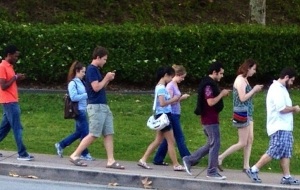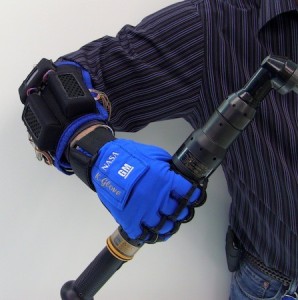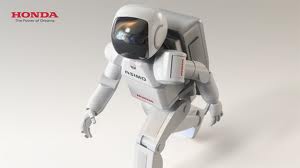In the 1990s, smartphones first started to hit the market as PDAs, which were the first attempts at crossing computers with cellphones, but it wasn’t until the early 2000s that smartphones such as BlackBerrys started to take off and the 2007 release of the original iPhone that the touch screen smartphones that we have come to know and love became ingrained into our everyday lives. Today, it can easily be seen that nearly every aspect of our present society has been reshaped by this new smartphone era, from how we communicate, to how we keep track of information, to our ability to focus without distractions, to privacy concerns.
Why Smartphones are Dominant in our Lives
Smartphones have become such a dominant part of our lives because social media has shaped their evolution. When the first social networking site Friendster was launched in 2002 the number of users soared to 3 million and engineers got the idea to combine a computer and a cellphone to give us what is now known as a smartphone. It was only one year later that other social networking sites MySpace and LinkedIn were launched, followeb by Facebook in 2004. With the exponential growth in memberships on these social networking sites, smartphones became a platform to easily and readily access them.
As the population’s obsession with their smartphones and social networking grew, the concept of a selfie, which is a photograph taken by oneself, was born. Engineers and designers saw that cameras had become an important selling point for their devices, so they have focused on furthering the technologies for better camera quality. Also, after selfies had become mainstream, designers realized front facing cameras needed to become a priority for the newer generations of smartphones. As an example, the Samsung Galaxy S5 and the Nokia Lumia 930, both released this past April, have the best cameras available and are competing against each other. Though the Nokia Lumia 930 features a 20-megapixel camera and a 1.2-megapixel front facing camera it is said that the Samsung Galaxy S5 outperforms with a 16-megapixel camera and 2.0-megapixel front facing camera, because it features HDR for taking photos with light sources. In addition, these days the technology advancements of smartphone cameras have allowed for such high quality images that people aren’t rushing out to buy digital cameras as often anymore. Recently the company GoPro’s stock took a dive after speculations rose that smartphones would soon replace the popular compact action camera. In a response they pointed out why their technology couldn’t presently been as being replicated into a smartphone, but some are still not convinced and only time will tell.
How Smartphones have Conditioned our Behaviours
Smartphones are such an important part of our daily lives now that their impact has been profound. Some may even question if smartphones are making us stupid. For example, the idea of storing information outside of our brains has been having biological effects on us ever since the invention of the printing press. And smartphones have become an even more popular and easy way for people to store information. In the last decade alone we have seen that phonebooks have become obsolete, because smartphones store all the users contacts information and are simply at the touch of their fingers or a quick search on the YellowPages app away! People have also become so dependent on their smartphone’s apps, which reinforced Apple’s trademark slogan “There’s an app for that”. It’s gotten as far as people depending on apps to tell them how much they should be tipping at restaurants. Additionally, language user applications such as Apple’s Siri have also added to smartphone dependency. Siri is considered by many to be a “intelligent personal assistant” which enables users to give verbal commands to search the web, control system settings, teach Siri who people are, send emails and text messages, create calendar events, set a timer or alarm, get directions, create or edit notes, create reminders, find restaurants, launch apps, control iTunes, interact with social media and much more! Smartphones have also been detrimental to their users’ literacy skills. With the help of spellcheck and autocorrect it is making people less aware of their increasingly poor writing abilities. Reading abilities have also declined as a result of content being condensed into the smallest possible packages. This has also led to a decrease in our vocabulary. Plus, people have a poorer sense of direction as result of their dependence upon GPS applications. Furthermore, smartphones have been causing disruption in their users sleep patterns, because they will stay up late to continue on their device. Additionally, staring at the screens before trying to sleep has been linked to sleep problems because the light stimulates the brain.
Smartphones have also taken a severe toll on our personal social skills. It seems as though conversations in person are a thing of the past with all the new smartphone technologies. People choose to interact in the least personal ways, such as coworkers that rather send an email rather than walk down the hall to talk in person. Apps like Skype are a fantastic way for people to communicate when it isn’t possible for real life conversations, but shouldn’t replace in personal interaction, because it is such an important skill for human beings. Furthermore, when you think about it every moment that is spent on your phone, you are giving up something that cannot be replaced, time. Think about how much time in your life you are giving up and what you could do with that time. How will you feel when your loved ones are gone and you cannot get that time back with them?
Smartphones have even shaped our children and thus our schools. In most elementary and high schools teachers try their best to keep the class room a cellphone free space for many reasons ranging from distractions to cheating to privacy issues, but unfortunately they are losing the battle. In 2014 a Canadian survey reviewed 5,400 children in grades 4 – 11 and found that a quarter of nine and ten year olds had their own cellphone, while 90% of the older students owned one. When they asked what they commonly used them for the responses were to play games, go on social networking sites and download or stream TV and music. Even more frightening was that the five youngest children of the survey admitted that they were never supervised while browsing the Internet. Meanwhile, in post-secondary institutions most professors and teachers are against smartphones being in the classroom, because students tend to be using them for non-work related purposes. And students have also turned to snapping a photo of the slides in lectures instead of taking the notes themselves, but most of the time they admit that they never look back at the photos. Additionally, they find themselves losing track of what they were doing when they are using their phones to capture their notes, even though most students still strongly believe that they can “multitask” such as drive, eat, take notes in class and converse while using their smartphones without it affecting their abilities to preform.
Major Concerns for Smartphone Owners
Smartphones as with cellphones pose a serious threat for distracted driving and since the early 2000s studies have shown increases in distracted driving, which have resulted in many countries, including Canada and the U.S., enforcing some form distracted driving legislation for hands-held and some places hands-free as well. Smartphones, unlike regular cellphones, pose even more distractions. In 2011, Statefarm, the U.S. insurance company conducted a survey to look into the habits of smartphone users and found that over 19% of people admitted to using the Internet while driving. Statefarm reconducted the survey in 2013 and found the numbers of people browsing the Internet on their smartphones had risen to 25%. They also stated that this increase is related to the fact that 80% of drivers under the age of 50 own a smartphone.
With digital piracy issues becoming more questionable, may people are questioning the legalities of unlocking their smartphones to switch between providers and jailbreaking or rooting smartphones allows the users to customize and personalize your device, block ads, remove or freeze bloatware, use a firewall and much more. As far as unlocking smartphones goes the U.S. senate voted unanimously on July 10, 2014 to allow users to unlock their smartphones, which allows users to keep their phone if they switch providers. Additionally, jailbreaking and rooting your smartphone are legal, though it may void the warranty; it is just pirating apps that is illegal. Though it is still controversial, after two men were recently convicted for distributing pirated mobile apps and a U.S. Attorney went as far as saying: “Copyright infringement discourages smart, innovative people from using their talents to create things that the rest of society can use and enjoy”.
Another major concern with smartphones is privacy issues. How safe is the information on your smartphone? Privacy experts and government officials are more concerned than ever about the safety of the information people store on their smartphones. For example, personal financial information can be stored on banking and shopping apps, your smartphones GPS can provide your current and past whereabouts and without your awareness app developers can sell this information to other companies, such as to future employers and insurers. After FTC, a company operating a social networking app, was charged for collecting personal information without the users’ consent it issued a suggestion to other app developers and operating system providers to present a simple disclosure to the user explaining the data being collected and what it is used for. It is important for users to always be aware of what terms they are accepting before they allow access to their devices.
Thus with the development and advancements in smartphone technologies over the past couple decades it can be seen that they have had a significant impact on our society, affecting everything from social media, to photography, to brain drain, to solitude, to education, to transportation, to piracy, to privacy! Basically, they make us less social, more self centered, more thoughtless, more solitary, lazier, more distracted and more vulnerable, all in exchange for long periods of time spent staring into a virtual world.










